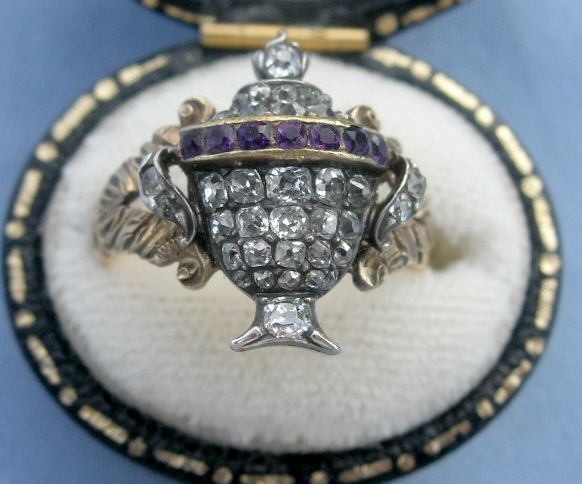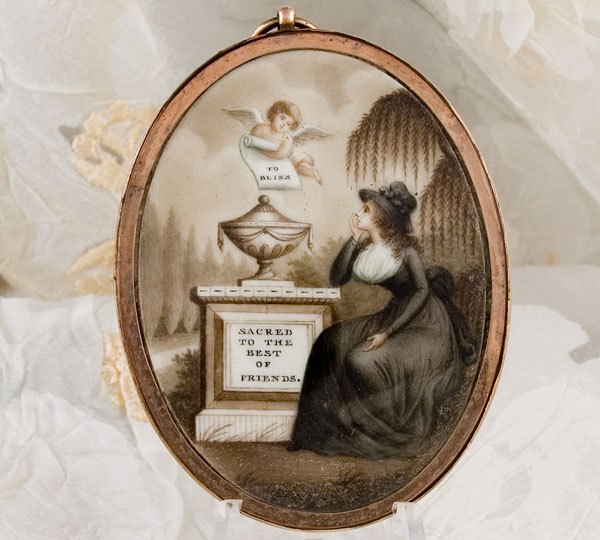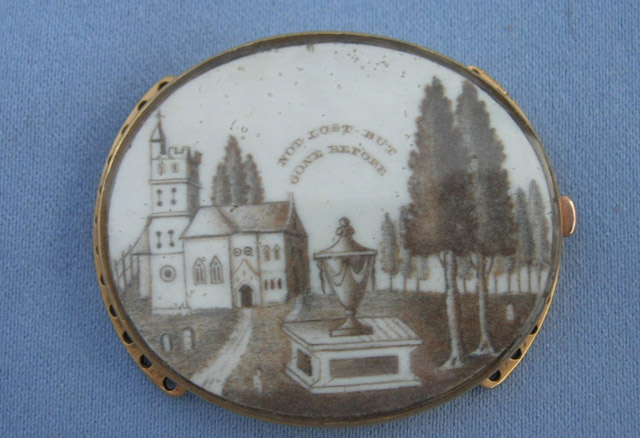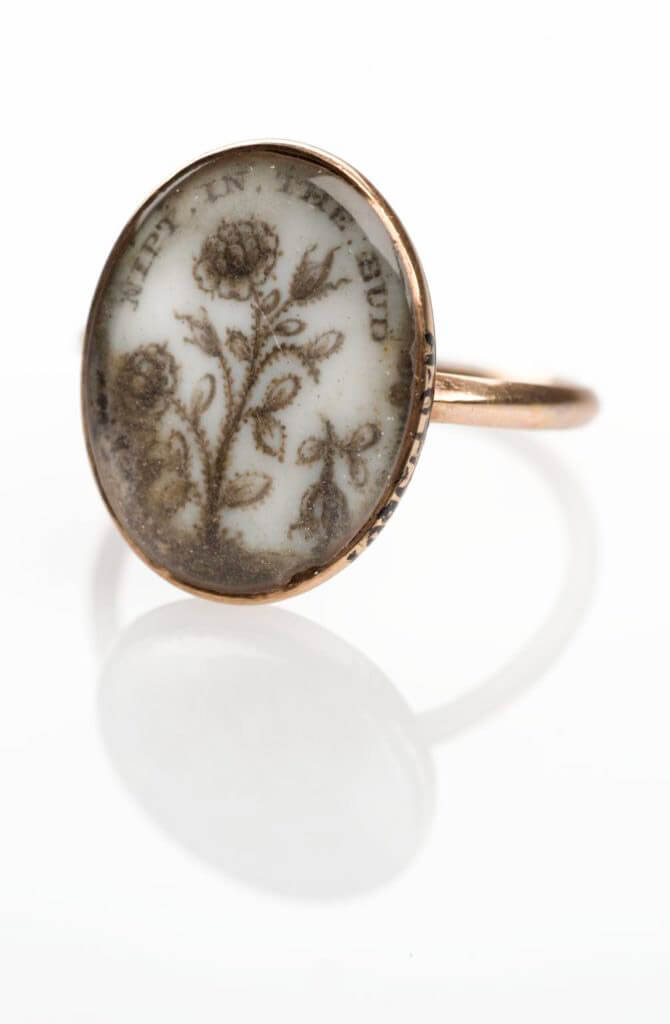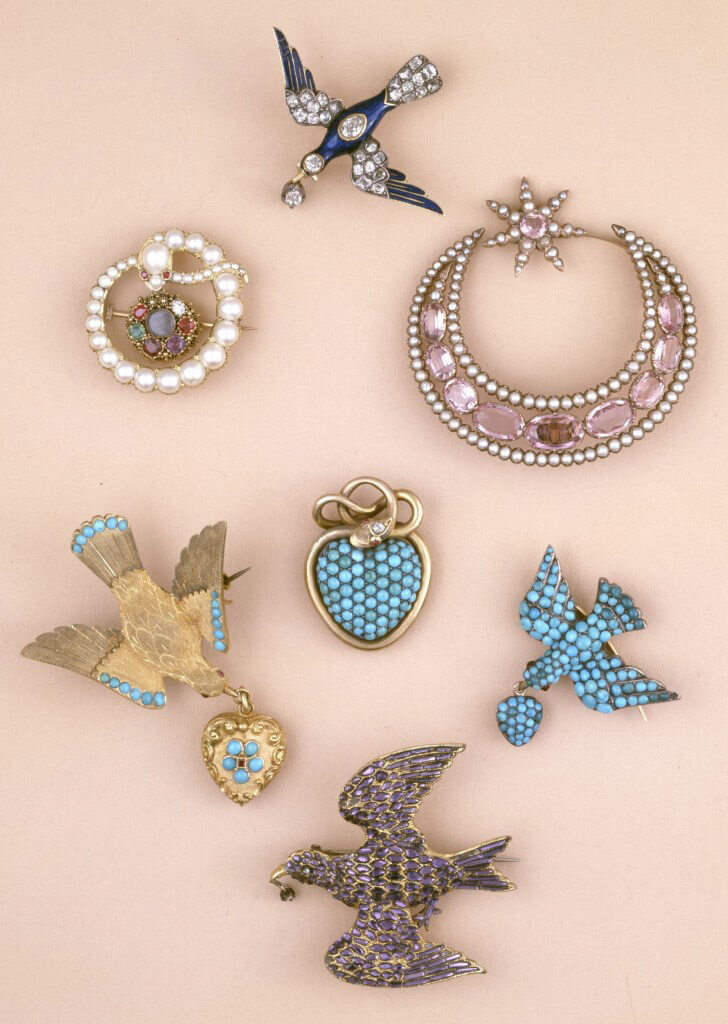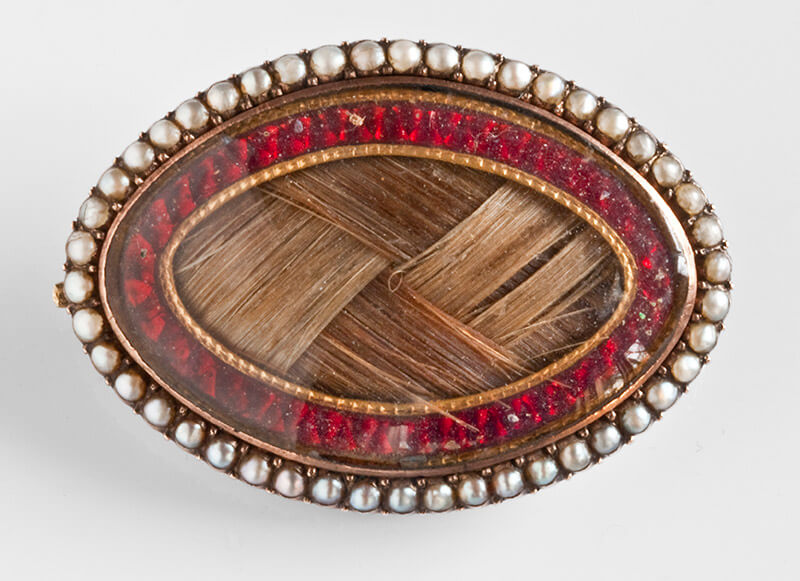Symbolism, The Urn
Here’s a surprising one for a Sunday morning! Why so surprising? You’d be forgiven for thinking that I’d already written about it, lord knows I’ve written about everything in between. The urn, that proud symbol of elegant beauty that holds our earthly remains, that symbol you’ve no doubt seen many a weeping mourning standing beside, that symbol of the Neoclassical period which seemed to appear on nearly every mourning peripheral. And yet, as popular and magnificent as this symbol was (and still is), it seemingly disappeared from jewellery after the Gothic Revival period. Why is this so?
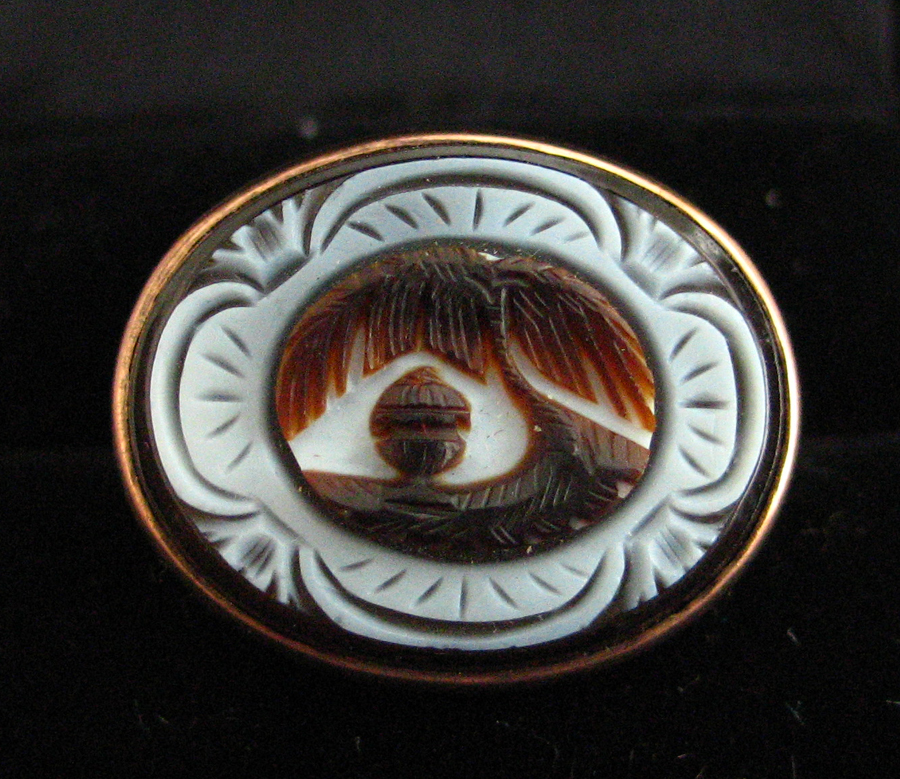
As a side note, if you can’t tell yet, the urn is my favourite symbol, it resonates with a timeless elegance and stern authority that I’d like to think I try to convey a little of. Nonetheless, it’s Symbolism Sunday, so I’ll try to dispense with the narcissism.
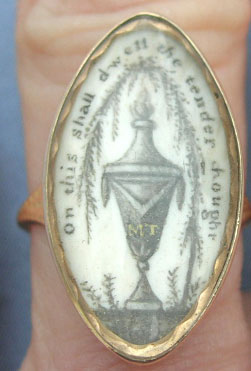
The urn itself is a vessel, or more specifically a vase, which naturally have their beginnings in pre-history when humanity began gathering items in order to carry them. We won’t be dwelling on this form of history, but rather the ancient Greek use of the urn in artistic depictions. The urn itself had evolved as a decorative item, often with art displayed upon the vessel itself prior to Greece in neighbouring Mediterranean societies, but its interpretation in jewellery design stems mostly from the Greek and Roman scenes in art and their reinvention during the Neoclassical period.
Usage of the urn had never wavered, however. Cremation of the body and the collection of ashes in the urn is a method that survived ancient civilisations well into the Dark Ages. The name itself is derived from the Latin ‘uro’, meaning ‘to burn’, so no matter what the shape of the vessel the title was always ‘urn’. This is a concept that never left the mainstream mind and its uptake as a Neoclassical symbol and its consistency as a funerary motif is simply a natural evolution for the urn’s depictions.

While burial became the more popular method of interment, the urn still retained its status as a symbol of death, testifying the death/decay of the body and into dust and the departed spirit resting with god.
This brings us to the draped urn. I’ve written about drapery in a previous Symbolism Sunday, but here we’ll focus on its most important use in relation to the urn. The draped urn itself often denotes the death of an older person, however, the drapery is often a constant when in relation to death. Interpretations of this can be when the shroud drapery denotes the departure of the soul towards heaven in relation to the shroud over the body, the drape is the partition between life and death or that it is guarding the sacred contents of the urn itself. In jewellery, finding the urn draped or undraped is quite common, but why is it so?
As hinted at before, the urn is a motif that reached incredible heights of popularity in Neoclassicism due to its interpretation from the original classical depictions. It was a motif that was easily lifted from its source and fulfilled all the classical resonance that a revival period needed to convey the style of its respective era. With the focus back upon the personal nature of mourning and the departure of the direct link towards god, death itself became something worn prominently in mainstream fashion. The urn was a perfect way to show this, draped or undraped. Sitting on top of a plinth, column or tomb, the urn is often the central focus of the mourning depiction. The mourning character in the depiction (male or female) is often interacting with the urn in some way, either leaning against it weeping, sitting near it, standing beside it or looking at it directly. This links the personal nature of mourning from the person into the jewel itself. The mourner is the wearer or the person who created the dedication and the urn represents the loved one. Consider that; there’s a direct link in methodology of the urn to the self, this is why the urn is the central motif and not the mourner.
Consider that when looking at a brooch, ring, bracelet clasp, pendant or any other peripheral from the late 18th to early 19th centuries. The urn is the concept that should draw the eye and take precedence over everything else.
Yet, it is a symbol that disappeared soon after the first quarter 19th century. If you’ve read anything else on this blog, you’ll know that the Gothic Revival period played a key role in reverting society back to more ‘traditional’ values and using a direct relation to the body in the urn conflicts with the burial/god connection which was part of the social understanding of life and death, that Christian values returned to a life under god. You can find the urn in use to around the 1820s, but many of the latter uses in jewels are anachronistic in the same way that memento mori would have been during the late 18th century. However, in funerary, the urn was still retained and is to this very day. In fact, its use in architecture in the latter 19th century / early 20th century was quite typical, but it had largely disappeared as a motif to represent the self in mourning.




